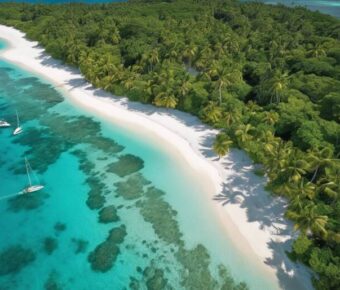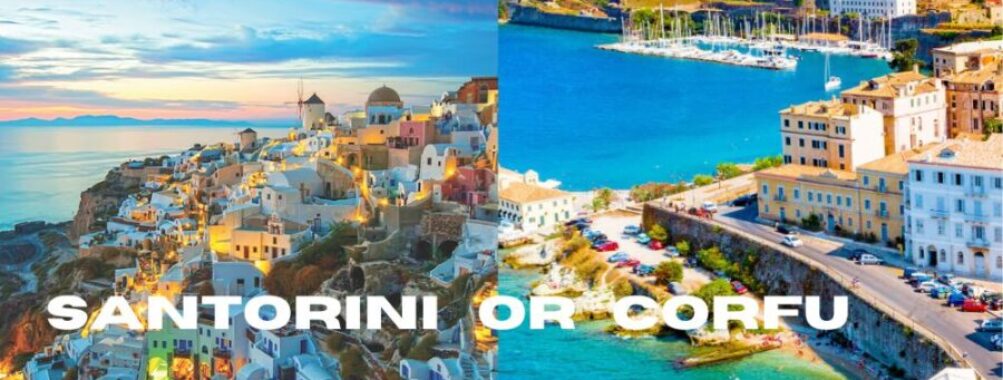
Santorini vs Corfu: Which Greek Paradise Best Matches Your Travel Style in 2025
Choosing between Santorini and Corfu feels like picking between two completely different versions of Greece. These stunning islands sit on opposite sides of the country, each offering their own special magic to travelers.
Corfu wins for families and longer stays with its diverse activities, sandy beaches, and lush greenery, while Santorini excels at romantic getaways and those picture-perfect sunset views that made it famous. The islands are about 375 miles apart, making it tricky to visit both in one trip unless you’re ready for some serious travel time between them.
The islands attract different types of travelers. Santorini draws couples and photographers with its white-washed buildings and caldera views. Corfu appeals to beach lovers and history buffs with its Venetian architecture and crystal-clear waters. The best choice depends on what kind of Greek adventure you’re after.
Contents
- Overview of Santorini and Corfu
- Geographical Context
- Cultural Significance
- Accommodations and Hospitality
- Hotels and Resorts
- Family-Friendly Stays
- Luxury Options
- Beaches and Natural Attractions
- Unique Beaches of Santorini
- The Sandy Coasts of Corfu
- Outdoor Activities
- Culinary Experiences
- Local Cuisine and Dining
- Wine Tasting and Wineries
- Cultural and Historical Insights
- Museums and Historical Sites
- Architectural Highlights
- Entertainment and Nightlife
- Nightlife in Santorini
- Corfu’s Party Scene
- Family Activities and Attractions
- Adventure and Exploration
- Hiking Trails and Nature Walks
- Water Sports and Activities
- Guided Tours and Excursions
- Planning Your Trip
- Best Time to Visit
- Transportation and Getting Around
- Tips for Travelers
- Frequently Asked Questions
- What distinguishes the travel experiences between Santorini and Corfu?
- Which island should I prioritize visiting if I have limited time in Greece – Santorini or Corfu?
- How do the beaches in Corfu compare to those in Santorini in terms of variety and atmosphere?
- Can you outline the differences in historical sites and cultural attractions between Santorini and Corfu?
- In terms of local cuisine and dining experiences, how do Santorini and Corfu differ?
- Could you provide insight into the seasonal considerations when choosing between a visit to Santorini or Corfu?
- More Travel Guides
Overview of Santorini and Corfu
Santorini and Corfu stand apart as two distinctive Greek islands with rich histories, unique landscapes, and different cultural influences that shape their identities. These islands offer travelers completely different experiences due to their locations and character.
Geographical Context
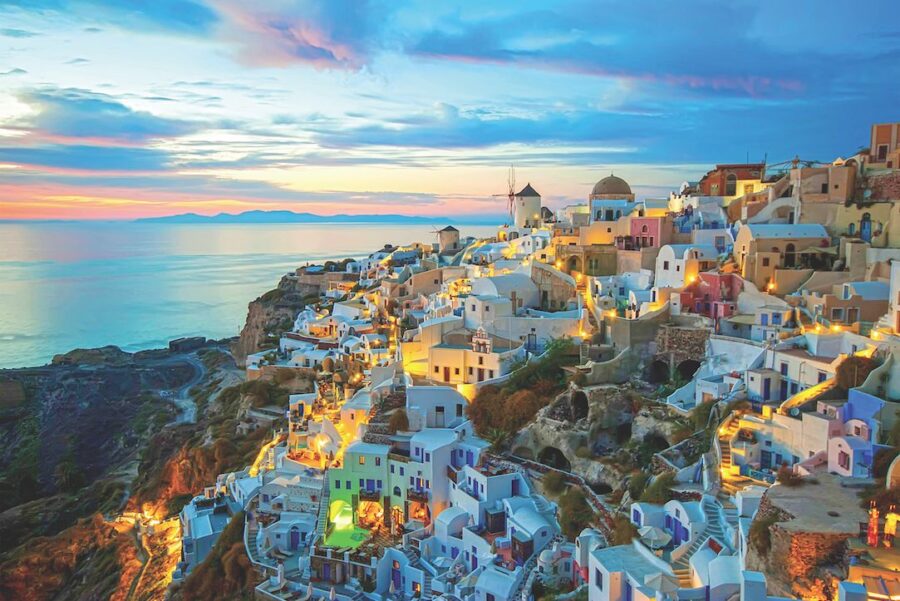
Santorini sits in the southern Aegean Sea as part of the Cyclades Islands, about 120 miles from mainland Greece. The island’s dramatic cliffs and caldera formed from one of history’s largest volcanic eruptions. Its crescent shape cradles a still-active volcano.
Corfu lies in the Ionian Sea, just off Greece’s northwestern coast. The island’s green landscapes set it apart from many Greek islands. Its position made it a strategic crossroads between Italy and Greece.
These islands couldn’t be more different in terms of travel connections. Corfu’s location near Albania and Italy makes it easy to include in European travel plans. Santorini requires more planning, as it sits far from other major destinations.
Cultural Significance
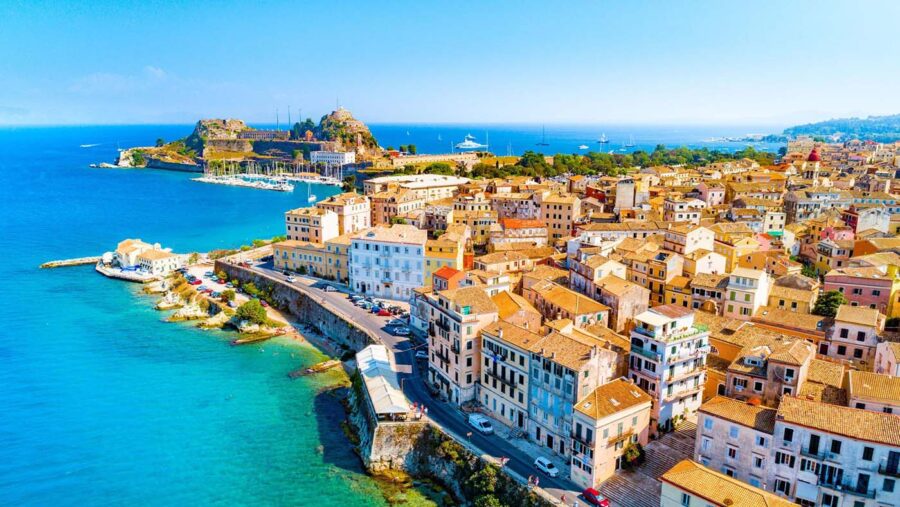
Santorini’s volcanic past shaped its unique architecture. The famous white-washed buildings and blue domes cling to cliff sides, creating the iconic postcard images many associate with Greece. Ancient Minoan ruins at Akrotiri tell stories of a civilization lost to volcanic activity.
Corfu bears strong Venetian influences from centuries of rule. The island’s old town earned UNESCO World Heritage status for its mix of Greek, Venetian, French, and British architecture. Medieval fortresses guard the coastline.
The islands maintain distinct cultural identities. Santorini focuses on wine production, using volcanic soil to grow unique grape varieties. Corfu’s culture centers more on olive growing and traditional Greek music.
Accommodations and Hospitality
Both Santorini and Corfu offer unique places to stay that match their distinct island personalities. Santorini specializes in cave hotels and caldera views, while Corfu features colonial-style mansions and beachfront resorts.
Hotels and Resorts
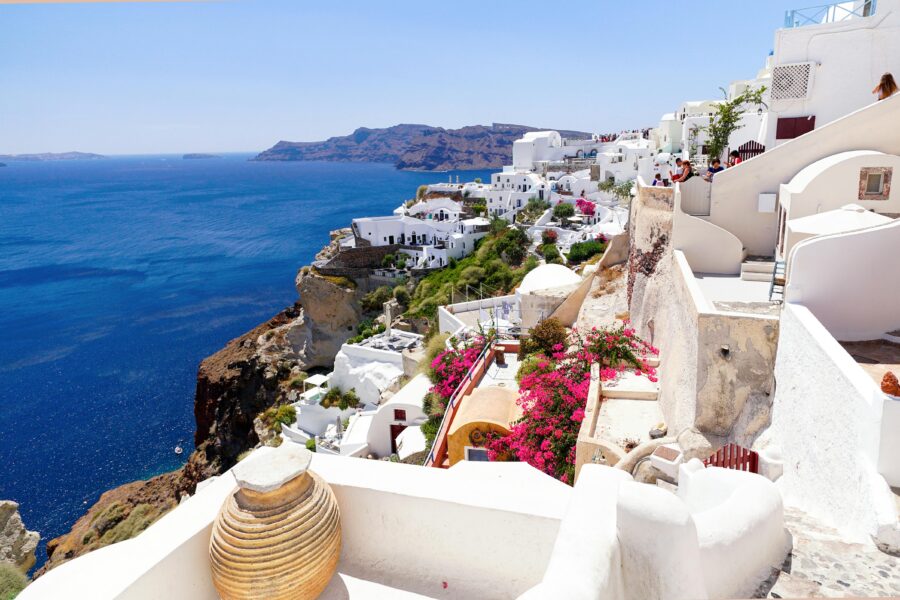
Santorini’s iconic cliff-side hotels provide stunning views of the Aegean Sea. Many rooms are built into volcanic caves, creating a magical atmosphere unique to the island. The best hotels cluster in Oia and Fira, with prices ranging from $150 to $800 per night.
Corfu’s accommodations spread across the entire island. The most popular areas include Paleokastritsa and Dassia, known for their beautiful beachfront hotels. Room rates tend to be 30-40% lower than Santorini.
Most Corfu hotels feature swimming pools and gardens. Many buildings showcase Venetian architecture, giving guests a taste of the island’s rich history.
Family-Friendly Stays
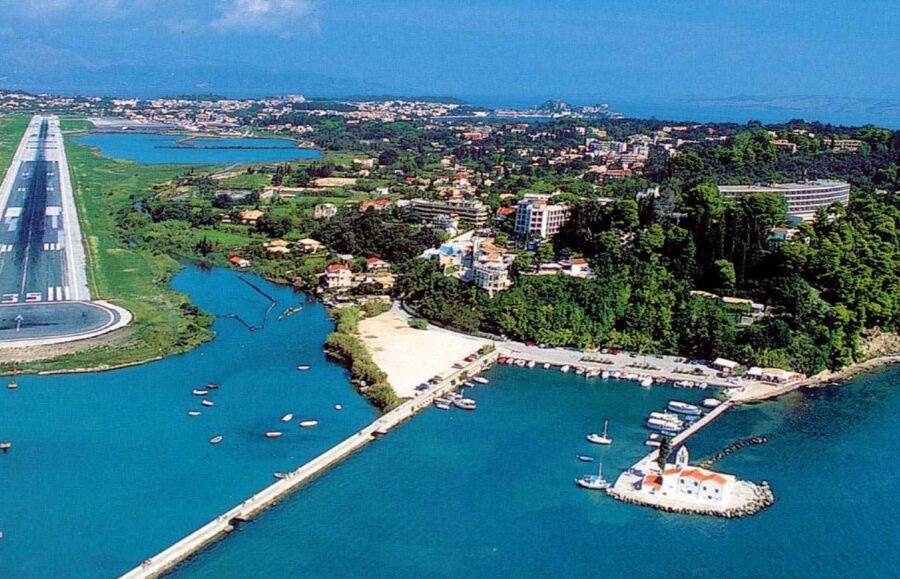
Corfu wins for family accommodations. The island offers numerous apartment-style rooms and family suites with kitchenettes. Many resorts include kids’ clubs, water parks, and supervised activities.
Popular family areas include Acharavi and Sidari. These regions have calm beaches and plenty of amenities within walking distance.
Santorini’s steep cliffs and luxury focus make it less suitable for young children. Some family-friendly options exist in Kamari and Perissa, where the terrain is flatter and beaches are easily accessible.
Luxury Options
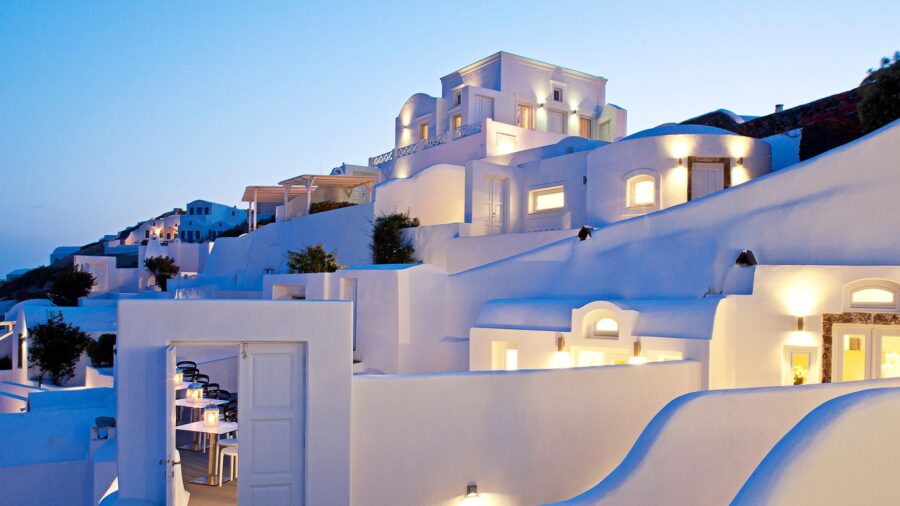
Santorini excels in high-end accommodations. Premium suites often include private infinity pools overlooking the caldera. Many rooms feature traditional cave architecture with modern amenities.
Top luxury hotels in Oia offer butler service and private terraces. Expect to pay $500-1,500 per night during peak season.
Corfu’s luxury properties blend old-world charm with modern comforts. The island’s best hotels occupy restored mansions and feature antique furnishings. Many upscale resorts sit on private beaches with exclusive access.
The northeast coast, known as Kensington-on-Sea, hosts several five-star properties favored by wealthy visitors.
Beaches and Natural Attractions
Each Greek island offers distinct coastal experiences, from Santorini’s dramatic volcanic beaches to Corfu’s soft sandy shores. Water activities and stunning landscapes draw visitors to both destinations.
Unique Beaches of Santorini
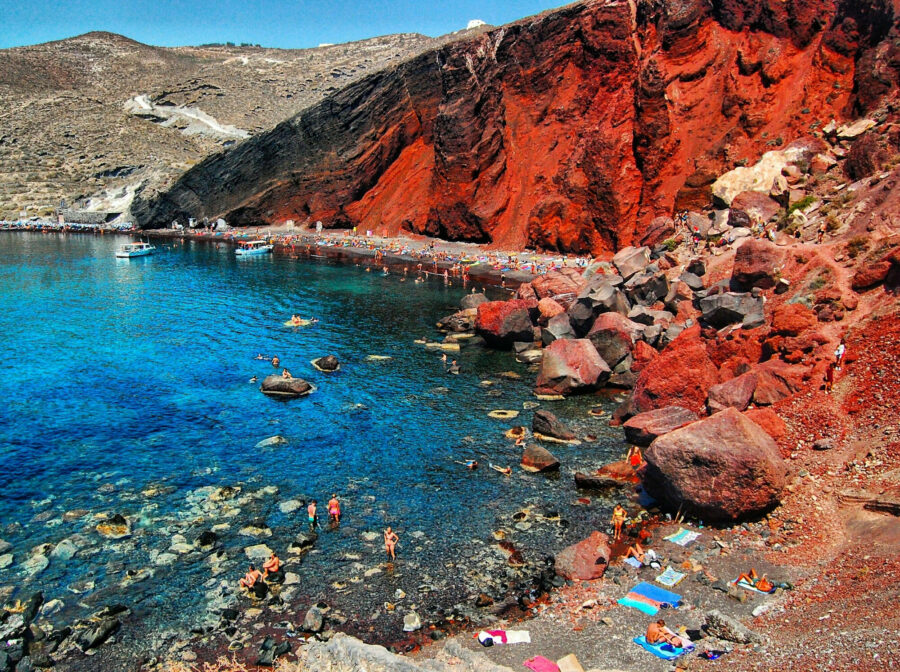
The volcanic heritage of Santorini creates spectacular beaches unlike anywhere else in Greece. Red Beach stands out with its rust-colored cliffs and dark red pebbles. The contrast between the deep blue waters and the crimson rocks makes it a photographer’s dream.
Black sand beaches dot the eastern coast. Perissa and Kamari beaches feature striking dark sand, smooth pebbles, and clear waters perfect for swimming. The water stays warm through most of the year thanks to the volcanic activity below.
Beach facilities are modern and well-maintained. Most beaches offer sunbeds, umbrellas, and beachfront tavernas serving fresh seafood.
The Sandy Coasts of Corfu
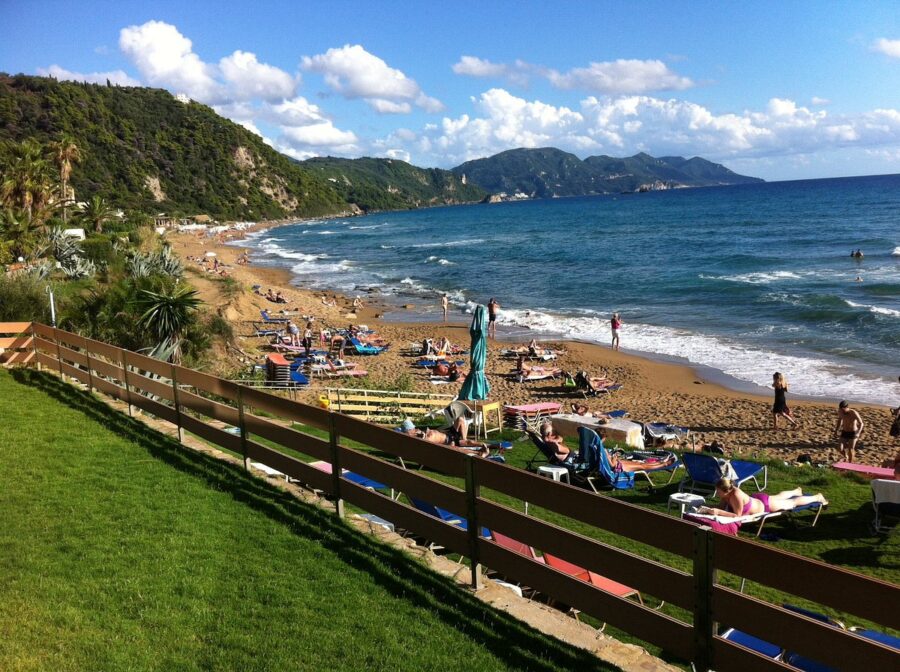
Corfu’s coastline features over 30 Blue Flag beaches with golden sand and crystal-clear waters. Glyfada Beach, on the west coast, offers wide sandy stretches and excellent sunset views. The calm waters make it great for families.
Paleokastritsa stands out with six picturesque coves surrounded by olive groves and cypress trees. The clear turquoise waters create perfect conditions for snorkeling and swimming.
Many beaches provide water sports rentals. You’ll find jet skis, paddleboards, and banana boat rides at popular spots like Dassia and Ipsos.
Outdoor Activities

Both islands excel in water sports. Corfu’s sheltered bays create ideal conditions for kayaking and paddleboarding. The underwater visibility makes it a top spot for snorkeling and diving.
Santorini offers unique diving experiences near the caldera. Divers can explore volcanic formations and swim through natural caves.
Hiking trails connect many beaches in both locations. The path from Fira to Oia in Santorini provides stunning coastal views. Corfu’s coastal trails wind through olive groves and past hidden coves.
Culinary Experiences
Both islands offer rich gastronomic traditions shaped by their unique histories and local ingredients, creating distinct food scenes that showcase Greek flavors in different ways.
Local Cuisine and Dining
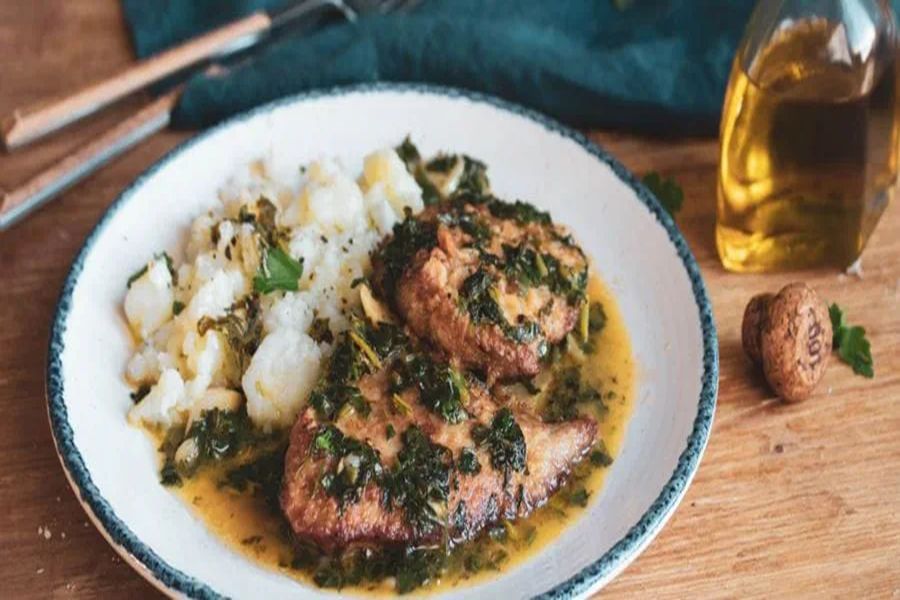
Corfu’s food reflects strong Venetian influences mixed with Greek traditions. The island’s signature dish, pastitsada, combines tender rooster or beef with pasta in a rich tomato-spice sauce. Sofrito, a veal cutlet in white wine sauce, appears on many traditional menus.
The restaurants in Corfu Town range from casual tavernas to upscale dining spots. Most local spots serve fresh catches from the Ionian Sea alongside regional specialties like bourdeto, a spicy fish stew.
Santorini’s volcanic soil gives its ingredients unique flavors. The island’s cherry tomatoes are famously sweet and intense. White eggplants, fava beans, and capers grow abundantly here.
Cliffside restaurants in Oia and Fira offer stunning caldera views with your meal. Many places serve local specialties like tomatokeftedes (tomato fritters) and fresh grilled fish.
Wine Tasting and Wineries
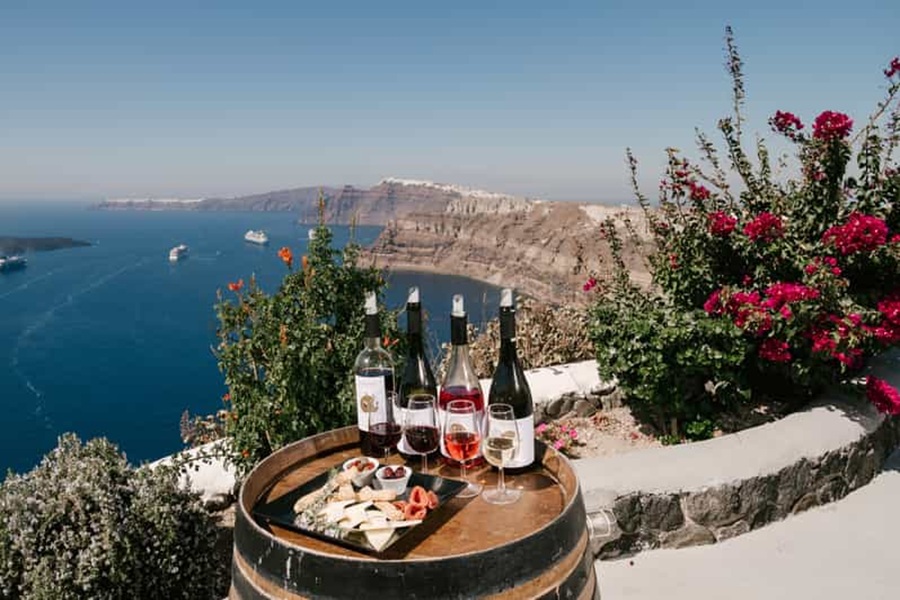
Santorini stands out for its exceptional wines, especially the crisp white Assyrtiko grape that thrives in the volcanic soil. The ancient vineyards use a unique basket-growing method called kouloura to protect grapes from strong winds.
Santo Wines and Venetsanos Winery offer tastings with caldera views. Each winery shows how they make wine using traditional methods passed down through generations.
Corfu’s wine scene is smaller but growing. Local wineries produce varieties like Kakotrygis and Petrokoritho. The Theotoky Estate lets visitors tour its olive groves and vineyards while sampling wines.
Small wine bars in both islands’ main towns serve local labels alongside Greek meze plates.
Cultural and Historical Insights
Both Santorini and Corfu offer rich cultural experiences shaped by different historical influences. Santorini reflects ancient Cycladic heritage, while Corfu shows strong Venetian and British touches in its landmarks and traditions.
Museums and Historical Sites
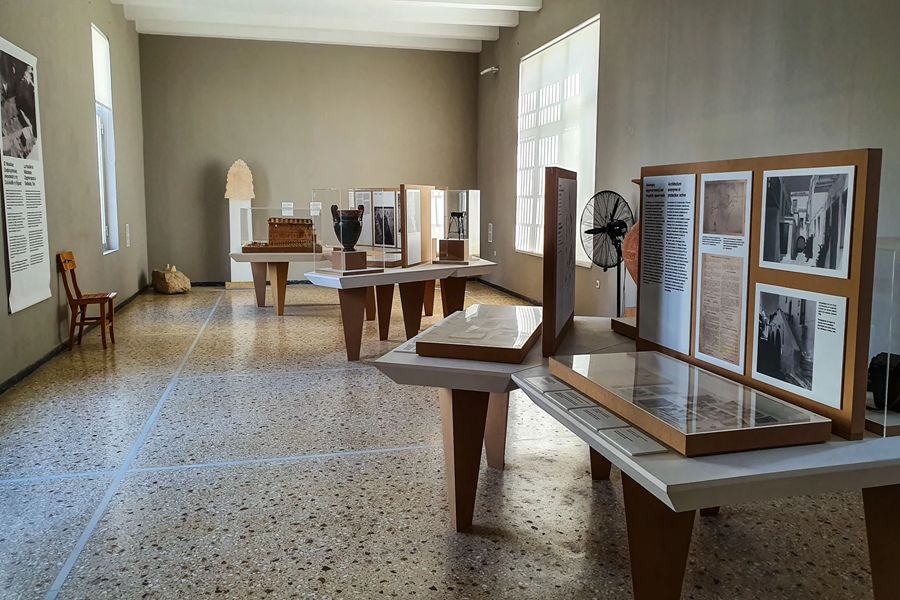
The Archaeological Museum of Fira displays amazing artifacts from Santorini’s ancient Minoan settlement. You’ll find pottery, frescoes, and jewelry that tell stories of life before the volcanic eruption.
Corfu’s past comes alive at the Achilleion Palace, built for Empress Elisabeth of Austria in 1890. The palace gardens feature Greek statues and incredible views of the countryside.
The Old Town of Corfu earned its UNESCO World Heritage status thanks to its mix of fortresses and cultural monuments. The Old Fortress stands as the town’s most iconic landmark.
Architectural Highlights
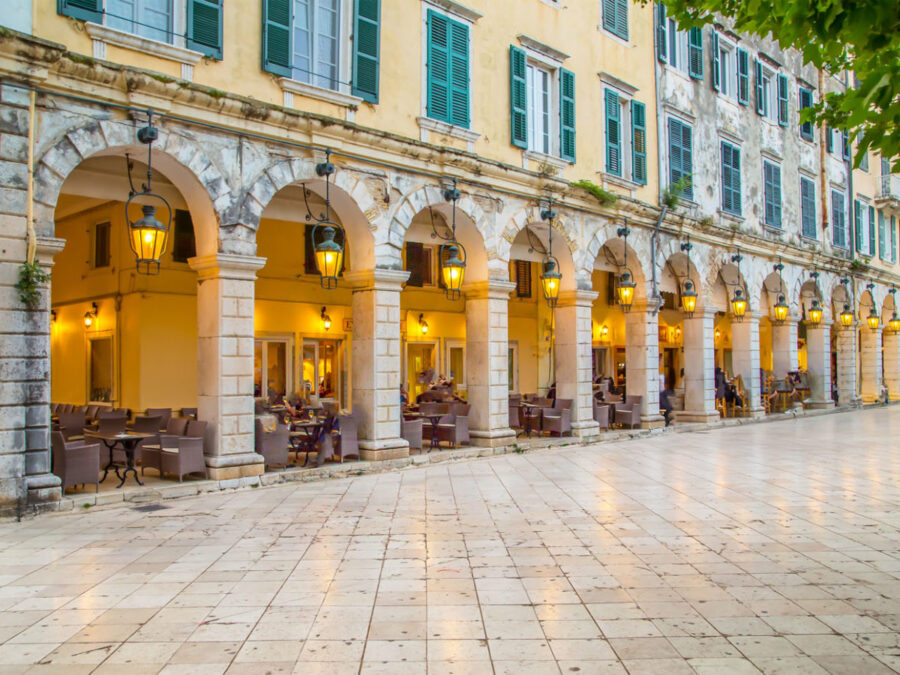
Santorini’s architecture reflects classic Cycladic style. The white-washed buildings and blue-domed churches of Fira create that picture-perfect Greek island scene everyone dreams about.
The streets of Corfu Town showcase a unique blend of architectural styles. Venetian-style buildings stand next to French arcades and British colonial structures.
The Liston, an elegant arched promenade in Corfu Town, was built during French rule and mirrors Paris’s Rue de Rivoli. Local cafes under its arches serve as popular gathering spots.
The narrow lanes of Corfu’s Old Town hide charming churches and traditional Greek homes with wooden balconies and red-tiled roofs.
Entertainment and Nightlife
Both islands deliver unique entertainment experiences. Santorini shines with upscale cocktail bars and sunset views, while Corfu brings energetic beach parties and diverse activities for families.
Nightlife in Santorini

The nightlife in Santorini focuses on sophisticated evening experiences rather than wild parties. Fira, the island’s capital, hosts most of the action with stylish rooftop bars and lounges.
Sunset cocktail bars in Oia draw crowds seeking perfect photo moments with a drink in hand. Most venues close around 2 AM, making this spot ideal for those who prefer early nights.
The island features several wine bars showcasing local volcanic wines. These spots often host live Greek music performances, adding cultural flair to evening entertainment.
Corfu’s Party Scene

Kavos stands out as Corfu’s party capital, especially popular with young British tourists. The strip buzzes with nightclubs, beach bars, and music venues that stay open until sunrise.
Ipsos and Sidari offer more laid-back party atmospheres. These areas blend beach clubs and traditional tavernas, perfect for those seeking variety in their nightlife options.
Beach parties pop up regularly during summer months. Many feature international DJs and themed events that attract party-goers from across Europe.
Family Activities and Attractions

Corfu offers Aqualand, one of Greece’s largest water parks. Kids love the slides and pools, while parents appreciate the well-maintained facilities.
Both islands provide boat tours. Santorini’s volcanic crater tours fascinate children, while Corfu’s glass-bottom boats reveal underwater life.
Shopping districts in Fira and Corfu Town cater to families with a mix of souvenir shops and local crafts. Many areas host street performers during evening hours.
Canal d’Amour in Corfu draws families for its unique rock formations and swimming spots. Santorini’s Red Beach offers distinctive volcanic landscapes that kids find fascinating.
Adventure and Exploration
Both islands offer exciting ways to get active and explore nature, from scenic mountain trails to crystal-clear waters perfect for water sports. Each destination brings unique opportunities for thrill-seekers and nature lovers to create unforgettable memories.
Hiking Trails and Nature Walks
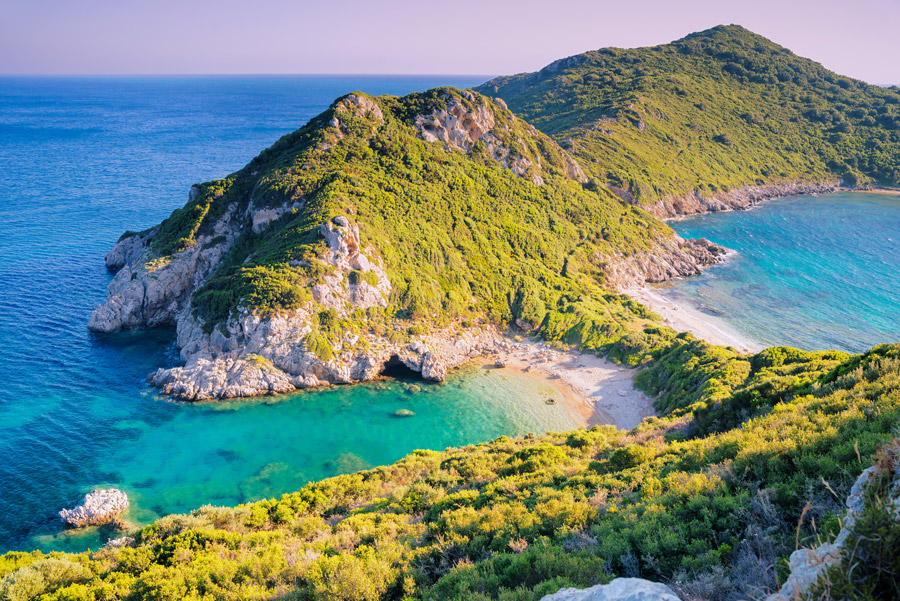
Corfu’s lush landscape features the Corfu Trail, a 136-mile path through olive groves and coastal cliffs. The trail splits into shorter day hikes for different skill levels. Mount Pantokrator offers panoramic views from its 2,972-foot summit.
Santorini’s volcanic terrain creates dramatic hiking experiences along the caldera edge. The most popular trail connects Fira to Oia, taking about 3 hours to complete. Ancient paths wind through traditional villages and vineyards.
Water Sports and Activities

Dassia Beach in Corfu stands out as a prime spot for water sports. Visitors can try windsurfing, jet skiing, and parasailing in the calm waters. The clear seas around Corfu make it ideal for scuba diving adventures.
Santorini’s volcanic waters host unique swimming spots. Red Beach and White Beach offer snorkeling opportunities among volcanic rocks. The island’s strong winds create perfect conditions for kitesurfing, especially at Perissa Beach.
Guided Tours and Excursions
Corfu features expert-led tours through its UNESCO World Heritage old town. Boat tours visit hidden caves and secluded beaches along the coastline. Many trips include stops at small fishing villages and swimming breaks.
Santorini’s volcanic landscape makes for unique guided experiences. Sunset sailing trips explore the caldera, hot springs, and neighboring volcanic islands. Walking tours reveal hidden paths through traditional villages and ancient ruins.
Professional guides share local history and geology during volcano hikes. Small-group tours often include wine tasting at local vineyards.
Planning Your Trip
Visiting Santorini and Corfu requires careful planning around peak seasons, transportation needs, and local logistics. Both islands have distinct characteristics that affect when and how to visit them best.
Best Time to Visit
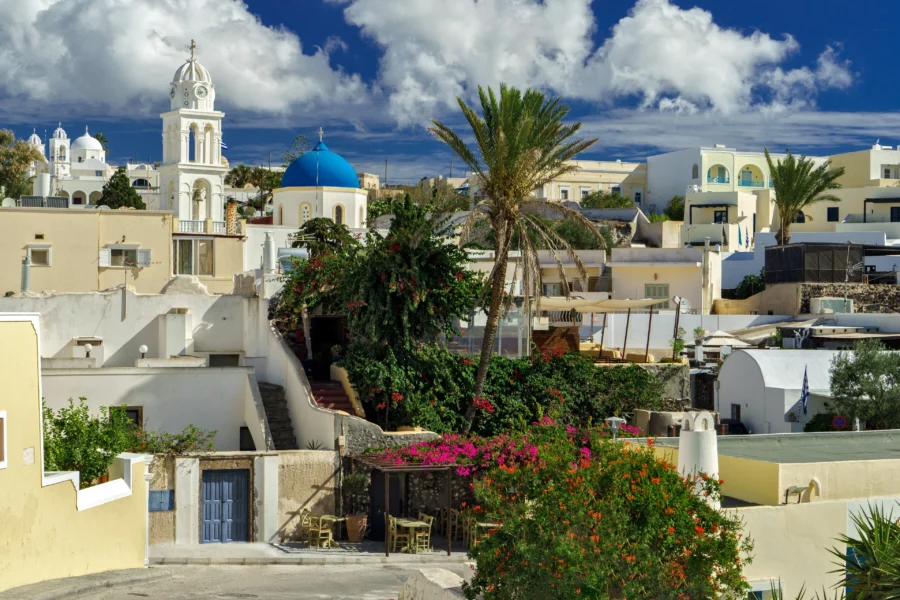
The Greek islands sparkle between April and October. Peak season runs from June through August, with crowds and prices reaching their highest points in July.
Spring (April-May) brings mild temperatures perfect for sightseeing in both Santorini and Corfu. The islands burst with wildflowers and fewer tourists fill the streets.
Fall (September-October) offers warm waters for swimming and pleasant temperatures around 75°F (24°C). This season works great for exploring both islands’ villages and beaches.
Winter visits differ greatly between the islands. Corfu stays greener and more active year-round. Santorini becomes very quiet from November to March, with many businesses closed.
Transportation and Getting Around
Santorini’s towns are walkable, but the island itself needs other transport options. Search flights and rental cars to plan your journey effectively.
Local buses connect major towns on both islands. They run frequently in summer but less often in winter.
Corfu Town welcomes walking tourists through its historic streets. The rest of the island calls for a rental car or scooter to reach hidden beaches and mountain villages.
Taxis serve both islands but cost more than public transport. Book them through your hotel or at designated taxi stands.
Tips for Travelers

Book accommodations 4-6 months ahead for summer visits. Cliff-side hotels in Santorini and beachfront resorts in Corfu fill up fast.
Pack comfortable walking shoes. Both islands feature steep streets and uneven cobblestone paths.
Learn basic Greek phrases. While tourist areas speak English well, locals appreciate visitors trying their language.
Carry cash for small shops and tavernas. Many places away from tourist zones don’t accept cards.
Consider staying longer in Corfu if traveling with kids – its beaches and activities suit families better than Santorini’s cliff-side setting.
Frequently Asked Questions
Both Santorini and Corfu offer distinct travel experiences with their own unique charms, landscapes, and cultural heritage that appeal to different types of travelers.
What distinguishes the travel experiences between Santorini and Corfu?
Santorini draws visitors with its stunning caldera views, white-washed buildings, and romantic sunsets. The island focuses more on luxury experiences and high-end dining.
Corfu presents a greener landscape with venetian architecture and cypress trees. Its laid-back atmosphere suits families and nature lovers better than Santorini’s trendy vibe.
Which island should I prioritize visiting if I have limited time in Greece – Santorini or Corfu?
Santorini makes sense for travelers who want iconic Greek views and don’t mind crowds. The island packs many famous sights into a small area, making it perfect for short trips.
Corfu needs more time to explore properly. Its larger size and spread-out attractions work better for longer stays of at least 5-7 days.
How do the beaches in Corfu compare to those in Santorini in terms of variety and atmosphere?
Corfu wins for beach variety with long stretches of golden sand and clear water. Many beaches offer water sports and family-friendly facilities.
Santorini’s beaches stand out for their unique volcanic sand colors – red, black, and white. They tend to be rockier and less suitable for traditional beach activities.
Can you outline the differences in historical sites and cultural attractions between Santorini and Corfu?
Corfu features strong Italian influences in its architecture, with notable sites like the Old Fortress and Achilleion Palace. The island’s old town carries UNESCO World Heritage status.
Santorini focuses on ancient history through sites like Akrotiri and Ancient Thera. The island’s volcanic past shapes much of its historical narrative.
In terms of local cuisine and dining experiences, how do Santorini and Corfu differ?
Santorini specializes in fresh seafood, cherry tomatoes, and white eggplants. Many restaurants offer cliff-side dining with caldera views.
Corfu’s cuisine shows Italian and British influences. Local specialties include sofrito, pastitsada, and kumquat liqueur.
Could you provide insight into the seasonal considerations when choosing between a visit to Santorini or Corfu?
Santorini gets very crowded from June to September. The best times to visit are April-May or September-October when crowds thin out.
Corfu enjoys a longer tourist season thanks to milder weather. The island stays pleasant from April through November, with peak crowds in July and August.

